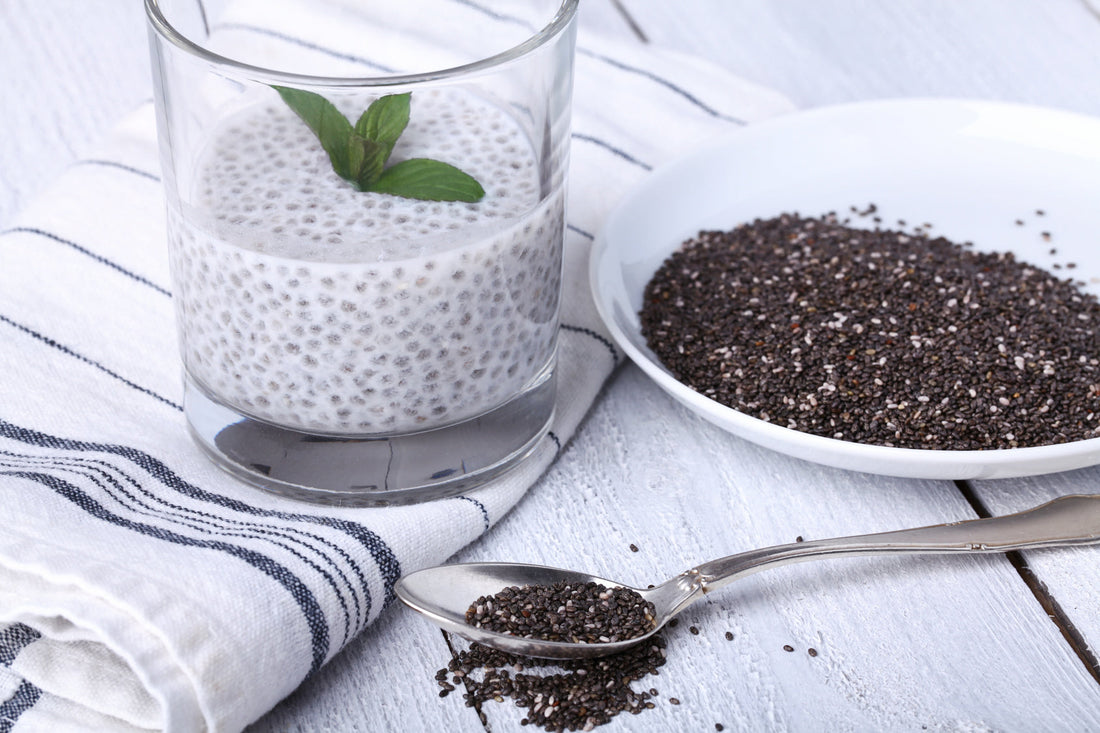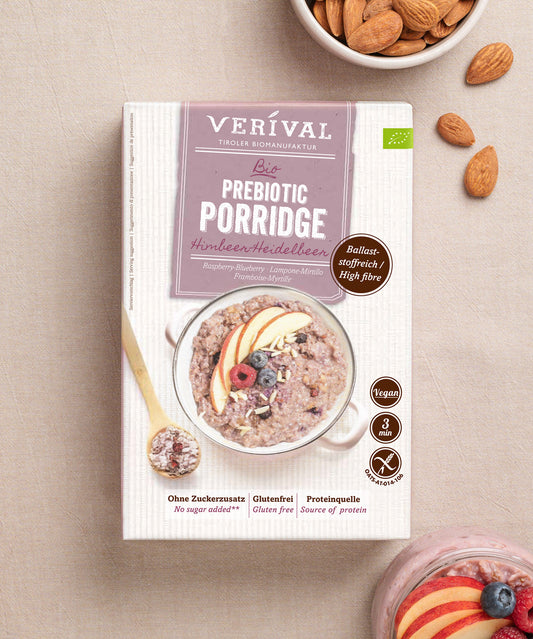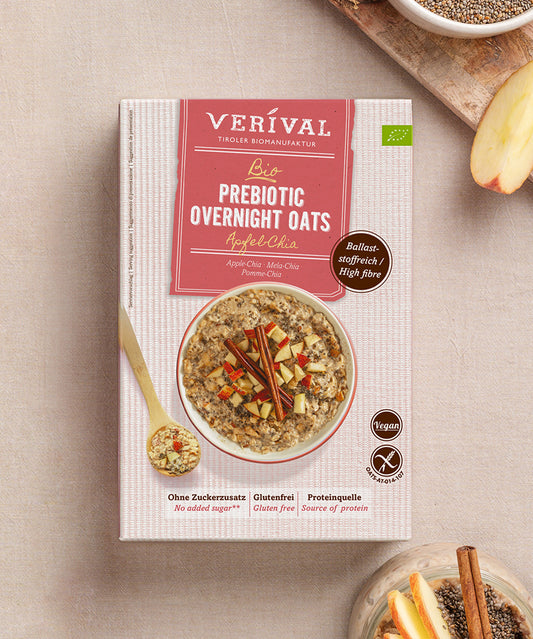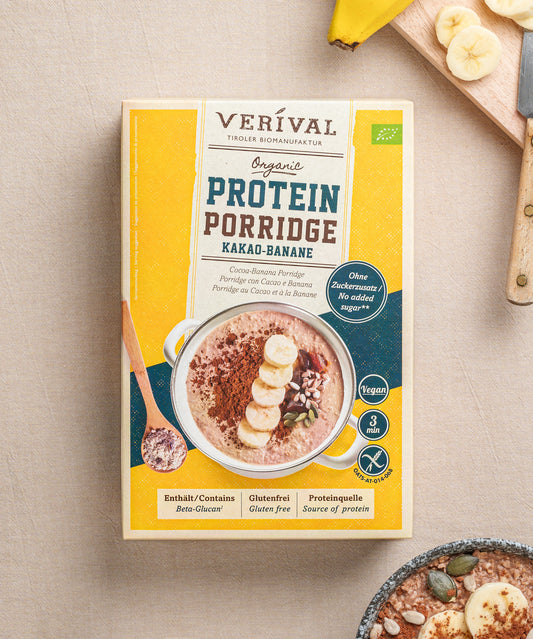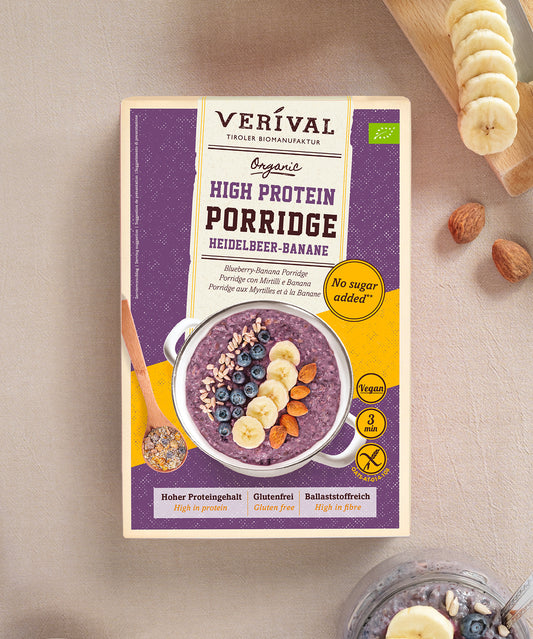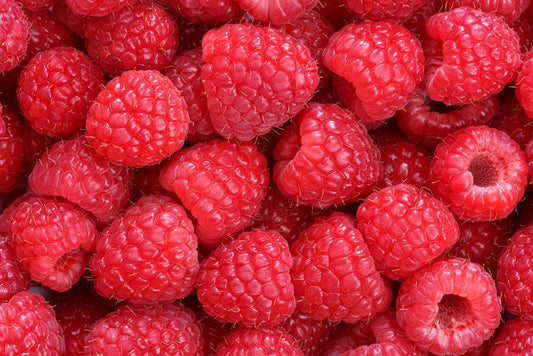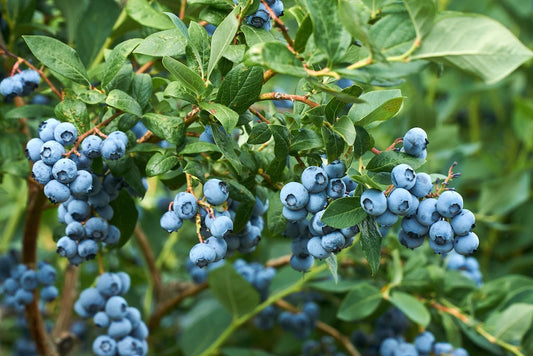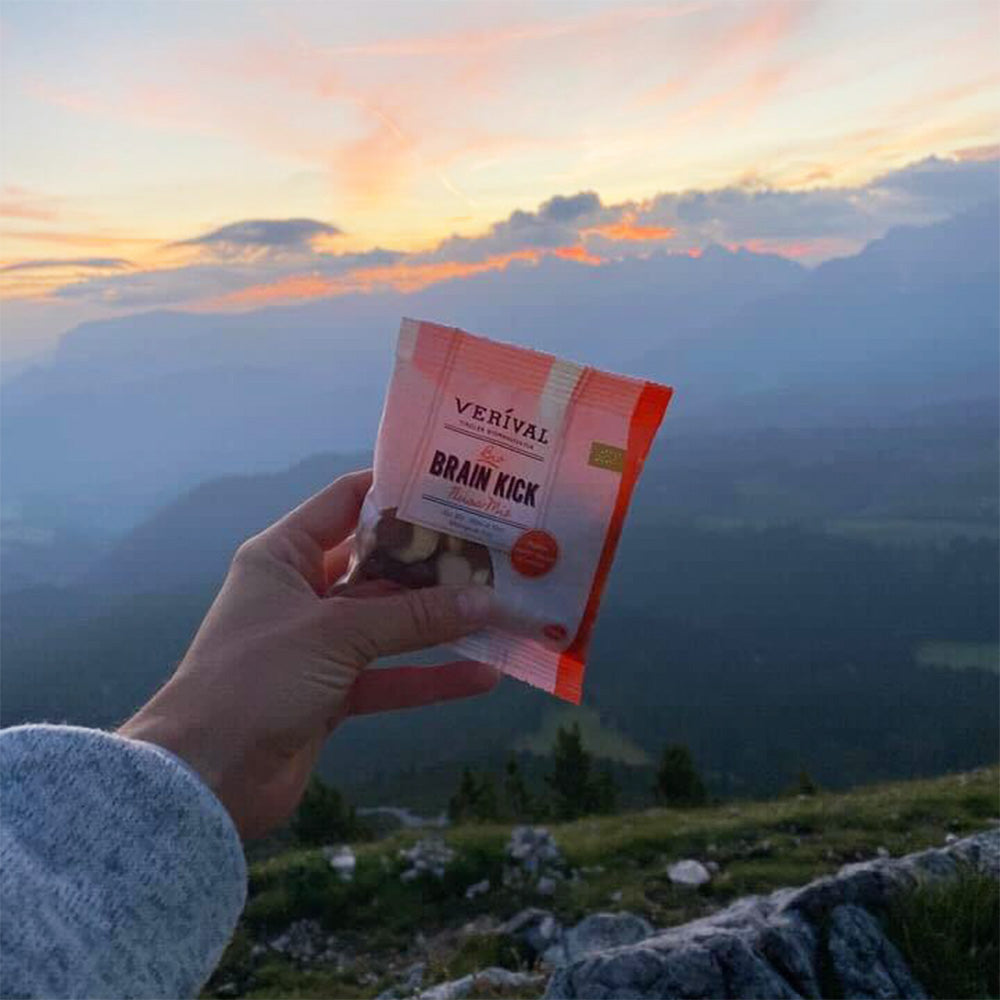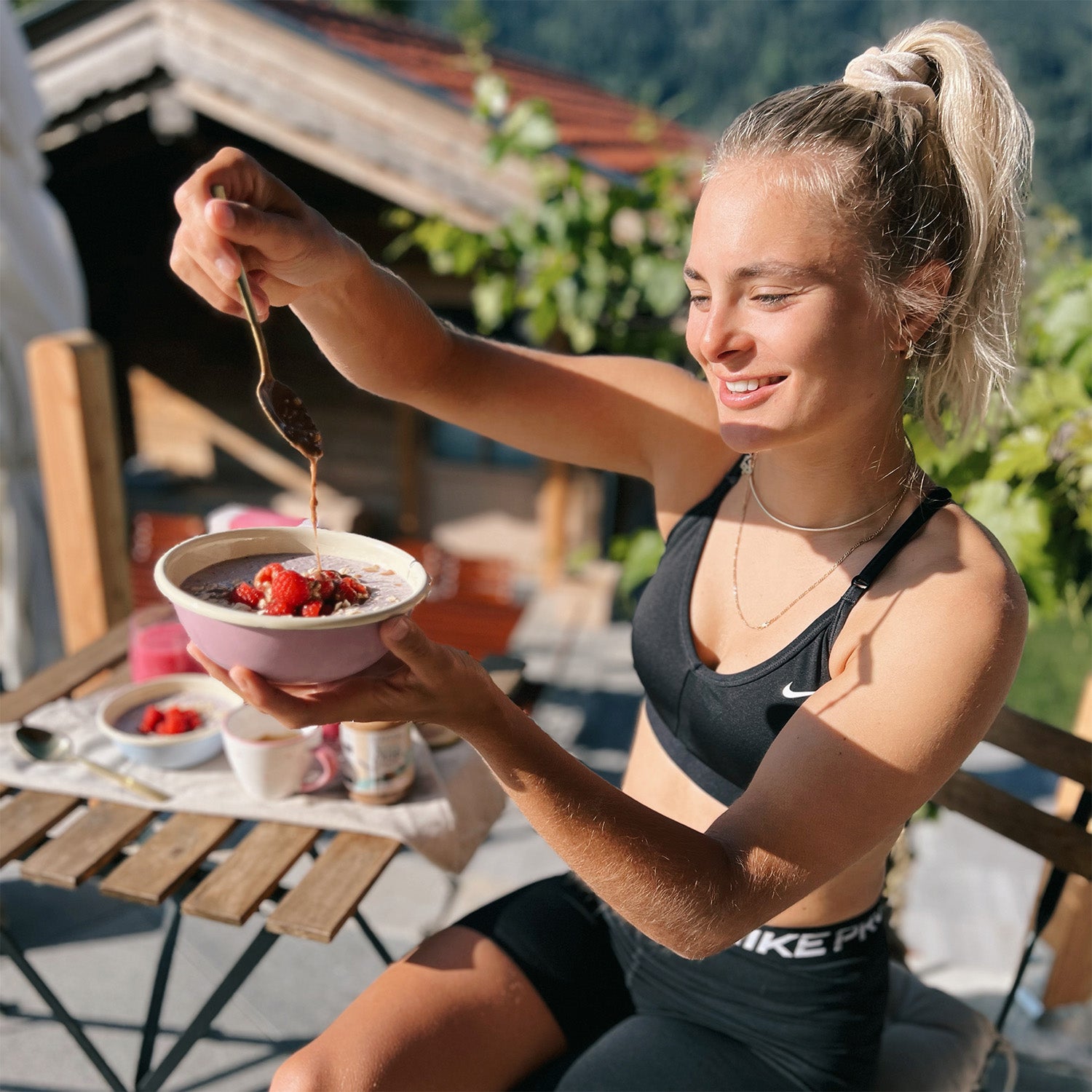Chia seeds are healthy and it is no longer possible to imagine a superfood without them. However, many people wonder how to prepare chia seeds.
To answer this question in advance, there are many different preparation options.
You can eat chia seeds raw, you can let them swell, grind them into flour, or roast them.
How the preparation works exactly, what effect the chia seeds have through the respective method of preparation and what makes the seeds and their ingredients so special, you will learn in the blog.
What makes chia seeds so healthy and popular?
The black seeds of the chia plant (Salvia hispanica) are celebrated and chia is said to have a positive effect. They originally came from Mexico over 5000 years ago and played a fundamental role in the nutrition of the Aztecs.
Their protein, omega-3 fatty acid and fiber content exceeds that of other conventional foods. In addition, chia seeds promote digestion and can regulate blood sugar. They are also said to be able to alleviate heartburn and arthritis (joint pain).
15 grams of chia seeds can work wonders. The seeds of the chia plant also help with cardiovascular diseases. The high proportion of omega-3 fatty acids in the seeds is of great benefit to our body.
However, these are only available to us if the seeds, similar to flax seeds, have been crushed or chewed very well.
Have a healthier breakfast with Verival
How can you eat chia seeds?
The black seeds don't really have any taste of their own. This may sound quite negative at first, but it is actually a huge advantage. This is because the small grains can be added to all kinds of things.
It doesn't matter whether you are preparing cakes and bread, porridge and muesli or smoothies and soups, anything is possible.
The chia seeds also taste great in salads. The most famous dish with chia seeds is chia pudding. This is a jelly-like cream made from water or milk and the seeds. It can be refined as you like.
Can you eat chia seeds raw?
Chia seeds are supposed to be eaten raw. As with other foods, important nutrients are lost when chia seeds are cooked. It's best to add the seeds as a topping directly to your muesli, porridge or smoothie.
How long do you have to let chia seeds soak?
Chia seeds swell. When soaked in milk or water, the mixture thickens and the volume increases tenfold. Therefore, the rule of thumb is:
Half a cup of chia seeds should be mixed with at least three cups of water or milk. Then let the pudding swell in the refrigerator for at least 10 minutes. This chia gel or chia pudding will keep you full for a long time.
Or try adding the seeds to your overnight oats and let them soak overnight. Then you can enjoy your healthy breakfast the next morning without having to get up earlier.
Should you soak chia seeds?
Soaking chia seeds definitely makes sense, but it's not a must. When the seeds come into contact with water, they swell and can increase up to 27 times their previous volume.
If you eat too many chia seeds when dry, the swelling can cause problems in the stomach. If you want to be on the safe side, soaking the chia seeds is a good idea.
If you want to soak chia seeds, there are several ways to prepare them:
- Preparation in water
- Preparation in milk (or milk substitute)
- Preparation with yogurt
- Preparation with curd cheese
Can you let chia seeds soak in yoghurt?
Chia seeds can not only soak in water, but also in yoghurt. Especially if you make your own yoghurt and it has become too runny, chia seeds are great for thickening the yoghurt.
Chia seed ingredients in detail
That the black seeds are truly a superfood is revealed only by their ingredients. For example, chia seeds contain more iron than spinach. In addition, these seeds, which are valuable for the body, contain many antioxidants, such as phenolic acid.
The seeds also contain vitamin B3, which contributes significantly to health. All of these active ingredients help to protect the cells in the body by catching free radicals.
Crushing and grinding chia seeds
Chia seeds should be crushed or ground, but the human body can also utilize them whole. However, you must consume them with enough liquid, otherwise the chia seeds can cause side effects.
If you do decide to grind them, it is best to put the seeds in a normal coffee or grain mill. After that, you should eat the seeds quickly, as they quickly go rancid when ground.
Chia porridge from Verival – find out more here.
Cooking – chia seeds can also be cooked.
Chia seeds can be cooked. However, they lose a large part of their nutrients in the process. That's why chia seeds should actually always be eaten raw. So it's better to use them as a topping.
Roasting – roast chia seeds in a pan
Roasting chia seeds is useful, however, because, like oat flakes, they develop their flavor when roasted. This makes them a delicious topping for soups and salads.
To roast, simply place the seeds in a non-stick pan and roast them without oil or butter for about three minutes. After that, you should let them cool down first. The small seeds will keep for several months if roasted and stored in sealable containers.
What is a pseudograins?
Grains from plant species that do not belong to the genus sweet grasses are pseudograins or pseudocereals. They are used in the same way as normal grains despite this. The seeds of pseudograins usually have a high proportion of protein, starch, fat and minerals.
Although they do not have their own baking properties like normal grains (wheat, rye), they are otherwise treated and used like normal grains.
Why are chia seeds a special substitute for animal products?
Since chia seeds are perfect as an alternative source of protein, they are loved by vegetarians and vegans. They can be used as an egg substitute in burgers, waffles, cakes, spaetzle, pancakes and many other delicacies.
Overall, you should really try the seeds and incorporate them into your healthy diet. Chia seeds can help you lose weight, promote digestion, prevent cardiovascular disease and help protect cells.
With just 15g of chia seeds a day, you can improve your health.

